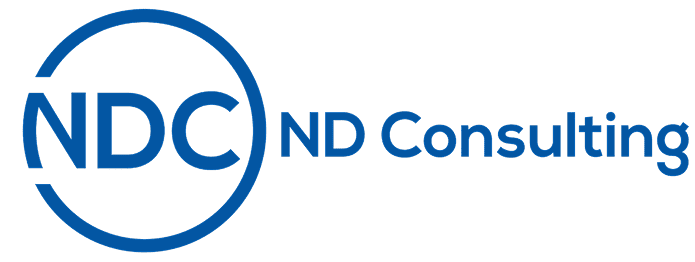Yardi is a powerful platform that serves as the operational core for thousands of property management firms. But even the most capable systems demand upkeep, troubleshooting, and occasional reconfiguration. This is where Yardi support becomes critical.
But not all support is the same.
Should you rely solely on internal resources? Is the Yardi help desk enough? Do you need dedicated consulting support or a hybrid model?
Choosing the right support model isn’t just a technical decision; it affects how efficiently your team operates, how quickly issues are resolved, and how scalable your processes are as your portfolio grows.
Let’s break it down into a practical decision-making guide.
Start by Mapping Your Current Yardi Challenges
Before evaluating support models, get a clear view of what your internal teams are struggling with. Different companies experience different roadblocks, so there’s no one-size-fits-all model.
Common pain points include:
- Delayed response from standard help desk services.
- Difficulty troubleshooting custom reports or automation.
- Lack of in-house expertise for module upgrades.
- Poor user adoption among staff.
- Manual workarounds due to improper setup.
A survey conducted by NMHC and Kingsley Associates found that most multifamily firms cite “technology inefficiencies” as a top operational challenge, often stemming from underutilized systems or unresolved technical issues.
If any of these issues sound familiar, you’re not alone, and the right support model can help address them head-on.
Support Model #1: In-House Yardi Administrator
Best for:
Mid-sized firms with experienced tech staff and limited custom configurations.
Some property management companies prefer to manage Yardi support internally by hiring a dedicated Yardi Administrator or IT staff trained on the platform.
Pros:
- Full control over workflows and configurations.
- Quick internal response time.
- Lower ongoing cost if workload is consistent.
Cons:
- High dependency on one or two individuals.
- Limited capacity to troubleshoot complex or rare issues.
- Difficult to scale across growing portfolios.
Internal support models work well when the team has deep Yardi knowledge and the company is not making frequent system changes. But when staff turnover occurs or Yardi updates roll out, internal-only models can fall short.
Support Model #2: Help Desk (Yardi Standard Support)
Best for:
Companies with straightforward setups and minimal customizations.
Yardi provides a standard support help desk for active clients, available via email or phone. While helpful for common issues, it may not be sufficient for more tailored needs.
Pros:
- Included with your Yardi license.
- Good for basic system questions or known bugs.
- Access to Yardi’s formal knowledge base.
Cons:
- Ticket response can take time.
- Limited assistance for customized setups.
- No hands-on training or workflow consultation.
Many teams find Yardi’s standard support helpful for isolated questions, but struggle when they need detailed assistance that requires platform familiarity within the context of their business.
Support Model #3: Outsourced Yardi Consulting Team
Best for:
Firms with complex portfolios, multiple modules, or frequent customization needs.
Outsourced Yardi support through certified consulting partners offers deeper involvement. These teams can diagnose issues, develop custom solutions, and train internal staff on best practices.
Pros:
- Specialized support tailored to your environment.
- Fast issue resolution and strategic problem-solving.
- Assistance with upgrades, integrations, and custom reporting.
Cons:
- Comes at a premium compared to in-house models.
- Requires coordination between your team and the consulting firm.
- You may need to vet consultants to find the right fit.
For fast-growing or portfolio-diverse businesses, this model offers flexibility and depth that internal or vendor support often lacks.
Support Model #4: Hybrid Approach (Internal + External)
Best for:
Large or growing firms with some internal capacity but complex system needs.
A hybrid model combines an internal Yardi Administrator (or team) with access to outside consulting on-demand. The internal team manages daily tasks, while the external team handles escalations, upgrades, or strategy.
Pros:
- Balanced workload and cost structure.
- Internal team gains knowledge from external experts.
- More resilient in case of turnover or major system shifts.
Cons:
- Requires clear communication between teams.
- Potential for duplicated efforts if not managed well.
This model often provides the best of both worlds. Your business stays agile, and your staff learns continuously, while still having a fallback for more complex tasks.
Key Questions to Ask When Choosing a Yardi Support Model
Rather than defaulting to a particular model, ask yourself the following:
- How often do you run into issues that your team can’t fix on their own?
- Do your users understand how to use the modules they have access to?
- How quickly do you need issues resolved to avoid operational delays?
- Are you using all the modules you’re paying for, or are they underutilized?
- Is your team spending too much time on manual workarounds or rework?
The answers to these questions will clarify where your support gaps are and what kind of help will actually improve performance, not just patch problems.
Cost Comparison: What Are You Really Spending?
It’s tempting to look at Yardi support as a cost center, but a closer look reveals something different.
|
Support Type |
Avg. Monthly Cost | Typical Resolution Time |
Risk of Business Downtime |
| In-House Only | $5,000 – $8,000 | Fast for simple issues | High for complex cases |
| Yardi Help Desk | Included | 1–3 business days | Medium to high. |
| Outsourced Consultant | $3,000+ (varies) | Fast + hands-on | Low |
| Hybrid Model | Varies | Case-by-case | Lowest |
When your team can’t generate reports for the board meeting, or when a lease workflow breaks during renewals, the real cost isn’t the support fee; it’s the lost time and revenue.
Final Thoughts
Choosing the right Yardi support model isn’t about spending more; it’s about spending wisely. You need to align the support structure with your team’s capacity, the complexity of your system, and the pace at which your business operates.
Some firms do well with internal staff. Others benefit from strategic consultants who can resolve issues faster and offer guidance when the road gets technical. Many companies thrive with a mix of both.
Whatever model you choose, the goal is the same: keep the system running smoothly so your team can focus on managing properties, not fighting the software.





